
Take a Relaxing Bath! 5 Must-Visit Hot Springs in Shizuoka
Some of the nation’s most famous and beloved hot springs (onsen) are found in Shizuoka Prefecture. Easily accessible from Tokyo, it is also a convenient location to visit on the way to the renowned Mt. Fuji. Below are five of the best hot springs in the area that will let you have a truly special experience.
This post may contain affiliate links. If you buy through them, we may earn a commission at no additional cost to you.
1. Atami Onsen
Located in the eastern part of Shizuoka, Atami City enjoys a sweeping coastal vista of Sagami Bay, as well as a mild climate, and is one of the most beloved hot spring towns in all of Japan. The main types of spring water used for the baths are “simple thermal”, “salt water”, and “sulfate". The water temperature ranges from 61°C to 99°C. The water flows abundantly and is smooth and gentle to the skin. There are over 300 natural hot springs in the area, so you can soak in one anywhere in the city. Moreover, thanks to its coastal location, Atami is also blessed with breath-taking views of the ocean and restaurants with local cuisine made from fresh seafood.
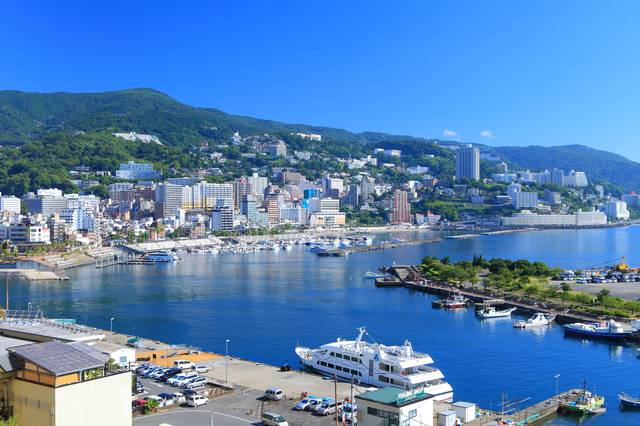
2. Ito Onsen
Ito Onsen is located right in the center of Ito City, which is on the eastern coast of the Izu Peninsula. It has a long history and is said to have originally opened way back in the Heian period (794 – 1185). The natural spring that supplies Ito Onsen flows at 31,520 liters per minute, which makes it the most abundant spring in Shizuoka Prefecture, and one of the most abundant in the whole nation. Facilities that utilize this fresh spring water are located in many places throughout the city. The main types of spring water are “simple thermal”, which is mild to the skin, and “light salt water”, which has excellent heat retention.
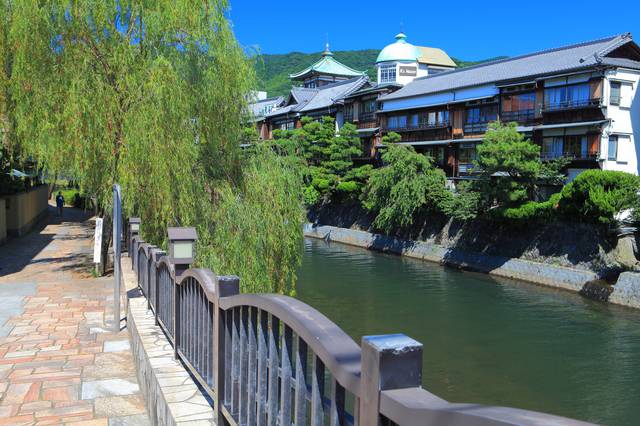
3. Izu Nagaoka Onsen
This hot spring area can be located at the foot of Mt. Sengen, lying on the west bank of Kano River in northern Izu Peninsula. It is composed of two sections: the over 1,300-year-old Kona Onsen and Nagaoka Onsen, which opened in 1907. In total, there are over 120 springs, most of which are “simple thermal”, which is a type of water that’s known to beautify the skin. The spring water here is also drinkable, with no odor or aftertaste. Nagaoka is blessed with a mild climate throughout the year, and it is also famous for seasonal fresh fruits, such as strawberries and mandarins.
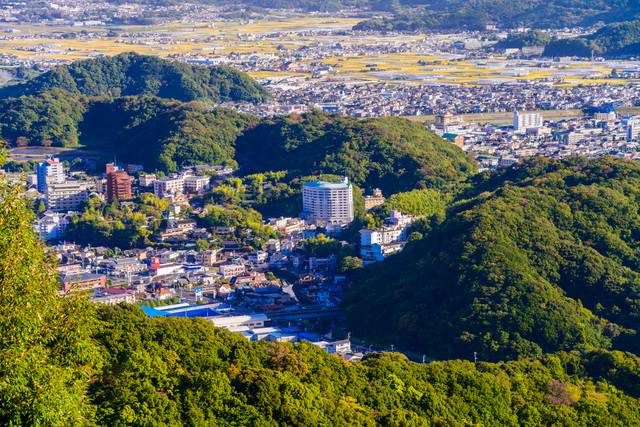
4. Shuzenji Onsen
Shuzenji Onsen is located along Katsuragawa Valley, which feeds into Kanogawa River in the northern part of the Izu Peninsula. It originally opened over 1,200 years ago. Its water is a "simple thermal" type that said to ease nerve pain. The symbol for the whole area, Tokko no Yu (Tokko Spring), is said to be the origin of Shuzenji Onsen. Legend has it that the famous priest, Kukai (Kobo Daishi), once met a boy who was bathing his sick father in Katsuragawa River. Moved, the priest used his tokko (a type of ritual iron club in Buddhism) and struck a nearby rock, which caused holy water to spring forth and heal the father. Tokko no Yu is active to this day. It is open to the public, but only for observation and not for bathing.
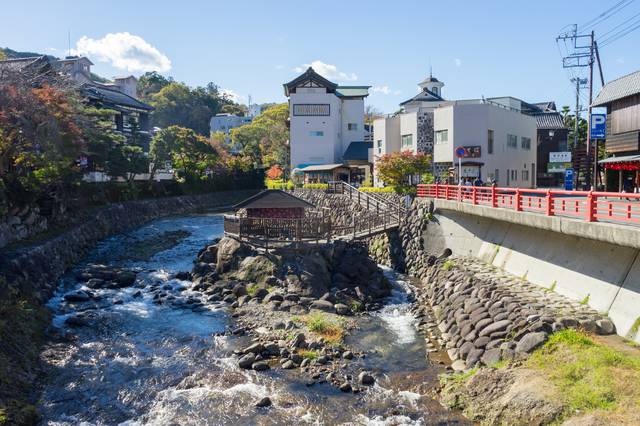
5. Bentenjima Onsen
This hot spring is located on Bentenjima Island, which is on the southern extreme of the famous Lake Hamanako in the southwestern part of Shizuoka. It is relatively new, having opened in 1960. This area is popular for enjoying various outdoor activities, such as fishing and swimming. The main type of the spring water is chloride (salt water), which is said to be effective for joint pains and rheumatism. Some of the inns on the island offer baths from which you’ll get splendid views of the large red torii (gate), Bentenjima Symbol Tower, majestically standing amid the lake.
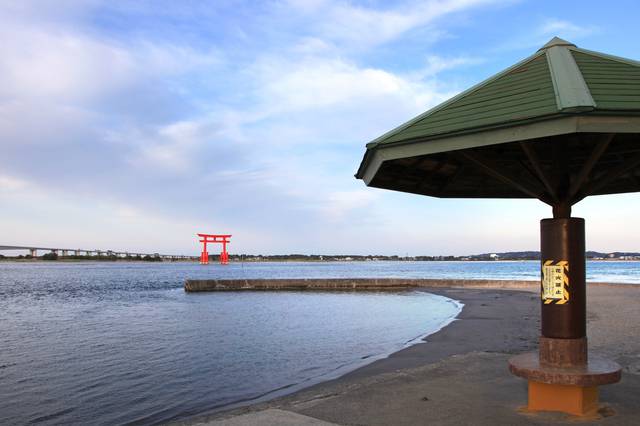
While these hot spring spots have many wonderful hotels and inns to stay in, there are plenty of opportunities for day travelers as well, so you can enjoy the full experience without staying overnight. It is a special experience that should be on anyone’s bucket list!
The information in this article is accurate at the time of publication.




